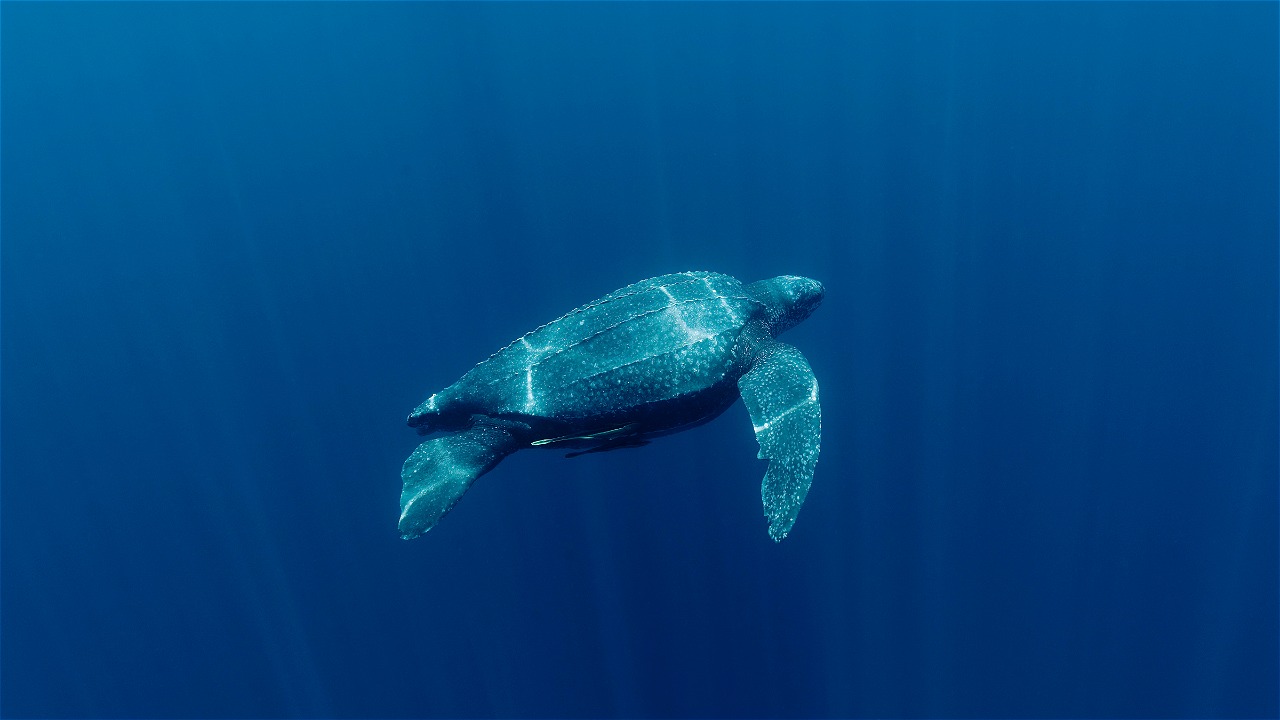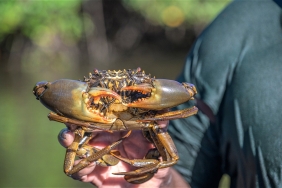SOCIALIZATION LEADS TO COMMITMENT TO PROTECT THE LARGEST LEATHERBACK TURTLE NESTING BEACH IN MALUKU
By: Syarif Yulius Hadinata - Marine Species Assistant WWF Indonesia Inner Banda Arc Subseascape
"Even in this village, we can make Perdes (Village Regulation) related to the protection of sea turtles so that everything is integrated," said Arif Hentihu, the Deputy King of Leisela at the Focus Group Discussion (FGD) session of the Socialization of Sea Turtle Conservation on Buru Island. This appeal invites all elements of society to jointly protect the largest leatherback turtle nesting beach in Maluku.
The Socialization of Sea Turtle Conservation was organized by the Maluku Natural Resources Conservation Agency (BKSDA) together with the Sorong Coastal and Marine Resources Management Workshop (LPSPL), the Buru Regency Fisheries Service (DP) and WWF Indonesia Inner Banda Arc Subseascape at Waspait Resort Buru (6/3). The 5-hour socialization was attended by the Fena Leisela Sub-district Government, the government and community of Waenibe Village, Waekose Village, Waspait Village and Wamlana Village, security apparatus from Air Buaya Police and Air Buaya Koramil as well as the Head of Soa or Customary Head. A total of 79 people attended the event.
The end of this socialization resulted in points of agreement and commitment as an action plan that will be carried out together including: (a) suppressing the destruction of marine habitats; (b) suppressing the use of chemicals that are not environmentally friendly; (c) the Village to RT needs to provide socialization to their respective communities about sea turtle protection; (d) encouraging the issuance of local regulations and Perdes / State Regulations / Joint Regulations in four villages (Waenibe, Waekose, Waspait and Wamlana) on sea turtle protection; (e) installing special banners in four villages for socialization to the general public; (f) local sons/daughters or children of the country are facilitated to become conservation officers; (g) forming Village Regulation Formulation Teams; (h) strict law enforcement assisted by the Police and TNI; (i) forming Community Supervisory Groups (POKMASWAS); (j) relocating turtle egg nests to be safe from predators, egg thieves and natural factors that make hatching of hatchlings low.
Protection of sea turtles is not a new thing as stated in Law No. 05 of 1990 concerning Conservation of Natural Resources and Ecosystems. But there are still many people who do not know and comply with it. If we look at the current conditions, in some areas there are still many findings of utilization and trade of sea turtles, eggs, body parts, and/or their derivative products that threaten the sustainability and conservation of sea turtles. This can be seen in the sea turtle nesting beach village in North Buru Island. Data from WWF Indonesia's 2017 monitoring of sea turtle populations showed that 57% of nests had their eggs taken from a total of 489 turtle tracks and nests landed. In addition, there have been 6 cases of sea turtle poaching that resulted in 2 leatherback turtles and 5 Olive Ridley turtles having to end their range. The high utilization rate of sea turtles shows the importance of socialization.
Buru Island is a new discovery as the largest leatherback turtle nesting beach in Maluku. Of the 489 turtle tracks and nests that landed, 251 leatherback turtle tracks and nests, 237 Olive Ridley turtle tracks and nests, and 1 green turtle track and nest were found. This is a pride for us in Indonesia, especially Maluku, because it has the potential for large-scale nesting beaches and has been included in the National Action Plan for Turtle Conservation in Indonesia. For that Let's keep Akang, there is still a glimmer of hope for saving sea turtles, the explorers of the ocean.





